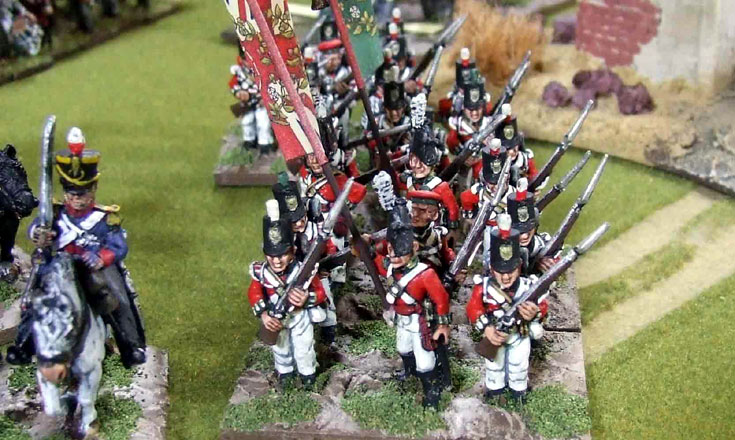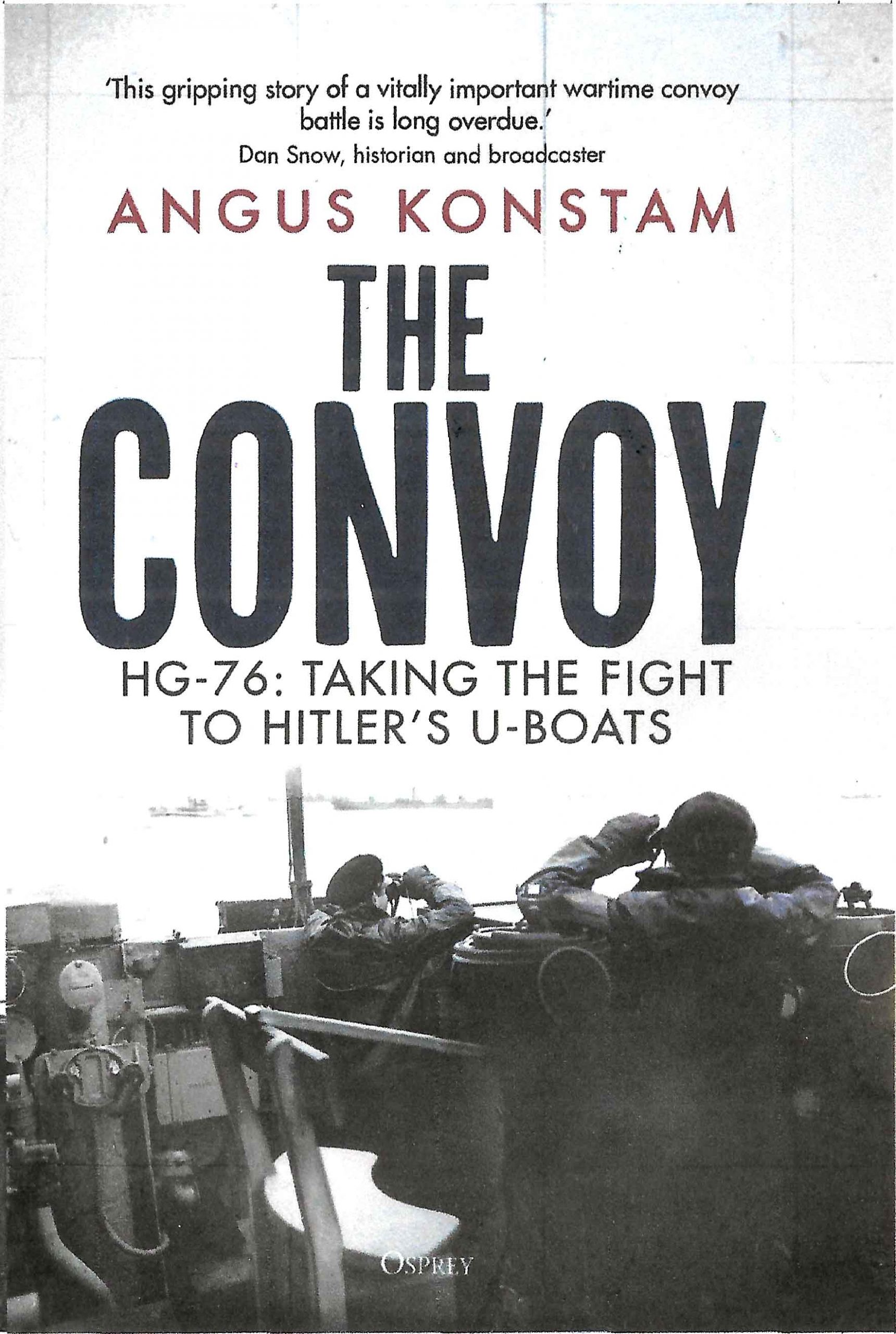
The Battle of Rioja, 1812
15th June 2008, Comments Off
The Napoleonic Wars, Republic to Empire, 28mm
Two or three times a year a group of wargamers who call themselves “The League of Gentlemen Wargamers” get together to play a game – usually up in the Scottish town of Kirriemuir. A year or so ago they kindly included me in their group, and now I thoroughly look forward to their games. First of all, they’re a generally pleasant bunch to hang out with, and secondly they put on some great games – and in most cases they’re far bigger than those you would normally play. This was no exception – an enormous Peninsular War game, which involved thousands of figures, and about a dozen players. The game was played out on three tables – one of which was 14 x 14 feet, with a pop-up hatch in the middle. This time also fought over a 12 x 8 foot table which was dominated by a superb Spanish town- Rioja – built for the occasion by Charles S. Grant, and finally on a 8 x 6 foot table, which featured a river gorge. We fought it out over a weekend. On the first day I found myself defending the river gorge against a far larger French force. Fortunately the terrain was on my side, and the only way forward for the French was up a road leading to a bridge over the river. Just in front of the bridge the gorge narrowed, and it was there that I made my stand. That’s the bridge in the photo above. The British regiment which plugged the gap was the 3rd Foot – “The Buffs”, supported by a second battalion in reserve, a battery of guns, and a screen of skirmishers. In fact their defense was so successful that the French were held up for 40 turns! Even more remarkably, the Buffs even managed to withdraw across the bridge in good order, and suffered a mere handful of casualties. They’re now my new pet regiment!
We fought it out over a weekend. On the first day I found myself defending the river gorge against a far larger French force. Fortunately the terrain was on my side, and the only way forward for the French was up a road leading to a bridge over the river. Just in front of the bridge the gorge narrowed, and it was there that I made my stand. That’s the bridge in the photo above. The British regiment which plugged the gap was the 3rd Foot – “The Buffs”, supported by a second battalion in reserve, a battery of guns, and a screen of skirmishers. In fact their defense was so successful that the French were held up for 40 turns! Even more remarkably, the Buffs even managed to withdraw across the bridge in good order, and suffered a mere handful of casualties. They’re now my new pet regiment! On the other small table things weren’t going quite so well. Despite a spirited charge by the Spanish lancers the defence of Rioja wasn’t particularly successful, and the Spanish were driven from the town in short order by a determined French assaulting force. Charles did a wonderful job with the buildings, and the town really looked fantastic. It even had ruined versions of the buildings inside the models, so the French players had a great time firing on buildings and watching them turn to rubble!
On the other small table things weren’t going quite so well. Despite a spirited charge by the Spanish lancers the defence of Rioja wasn’t particularly successful, and the Spanish were driven from the town in short order by a determined French assaulting force. Charles did a wonderful job with the buildings, and the town really looked fantastic. It even had ruined versions of the buildings inside the models, so the French players had a great time firing on buildings and watching them turn to rubble! Over on the main table both Marshal Soult’s French and the Duke of Wellington’s British and Portuguese marched onto the battlefield during the day, and it soon became clear that when the main fight began the following day, then the fighting would revolve around the bridges which spanned a meandering river. Although some heavy skirmishing took place that day, it was clear that the real battle would take place the following morning. As the umpire, Charles Grant had linked the three tables together – my rearguard action meant the French column which marched up the gorge would arrive quite late the following day, while the force which assaulted the Spanish town entered the battlefield early in the morning, preceded by a routing mass of Spanish troops.
Over on the main table both Marshal Soult’s French and the Duke of Wellington’s British and Portuguese marched onto the battlefield during the day, and it soon became clear that when the main fight began the following day, then the fighting would revolve around the bridges which spanned a meandering river. Although some heavy skirmishing took place that day, it was clear that the real battle would take place the following morning. As the umpire, Charles Grant had linked the three tables together – my rearguard action meant the French column which marched up the gorge would arrive quite late the following day, while the force which assaulted the Spanish town entered the battlefield early in the morning, preceded by a routing mass of Spanish troops.  On the second day (the Sunday) we all grouped around the big 14 x 14 foot table. You’d have thought there was plenty of room, but there was so much lead on the table that it actually looked congested – we even added an extra few feet onto both ends of the table, just to accommodate all the troops. This time the going was a lot tougher – at least on the British left wing, where the French launched a very determined assault on the British line. The French drives elsewhere on the battlefield were a lacklustre at best – even to the extent where the guy playing Marshal Soult threatened to court-martial one of his leading subordinates. My 2nd Division eventually made it onto the battlefield, but they had the relatively easy task of screening the British right, where they faced the same troops they’d fought in the gorge. French losses from the previous day were so high that their commanders were reluctant to press the attack, although they did succeed in chopping up some Portuguese cavalry out there.
On the second day (the Sunday) we all grouped around the big 14 x 14 foot table. You’d have thought there was plenty of room, but there was so much lead on the table that it actually looked congested – we even added an extra few feet onto both ends of the table, just to accommodate all the troops. This time the going was a lot tougher – at least on the British left wing, where the French launched a very determined assault on the British line. The French drives elsewhere on the battlefield were a lacklustre at best – even to the extent where the guy playing Marshal Soult threatened to court-martial one of his leading subordinates. My 2nd Division eventually made it onto the battlefield, but they had the relatively easy task of screening the British right, where they faced the same troops they’d fought in the gorge. French losses from the previous day were so high that their commanders were reluctant to press the attack, although they did succeed in chopping up some Portuguese cavalry out there. The main battle on the British left involved some very hard fighting, and by the end of the day’s fighting there was still a question mark over who was actually winning. The umpire eventually ruled that the game was a draw – although one which slightly favoured the French. The main thing was that everyone had a great time, and came away with memories of playing in a game which was both spectacular and challenging.
The main battle on the British left involved some very hard fighting, and by the end of the day’s fighting there was still a question mark over who was actually winning. The umpire eventually ruled that the game was a draw – although one which slightly favoured the French. The main thing was that everyone had a great time, and came away with memories of playing in a game which was both spectacular and challenging. The rules we used were Republic to Empire – a set produced by Barry Hilton of the League of Augsburg. Although they’re not available commercially, plans are afoot to publish them within the coming year. He claims they produce a faster game than General de Brigade, but I’m not convinced. However, they use a similar figure ratio and basing, so you can switch from one set to the other without much difficulty.
The rules we used were Republic to Empire – a set produced by Barry Hilton of the League of Augsburg. Although they’re not available commercially, plans are afoot to publish them within the coming year. He claims they produce a faster game than General de Brigade, but I’m not convinced. However, they use a similar figure ratio and basing, so you can switch from one set to the other without much difficulty.

